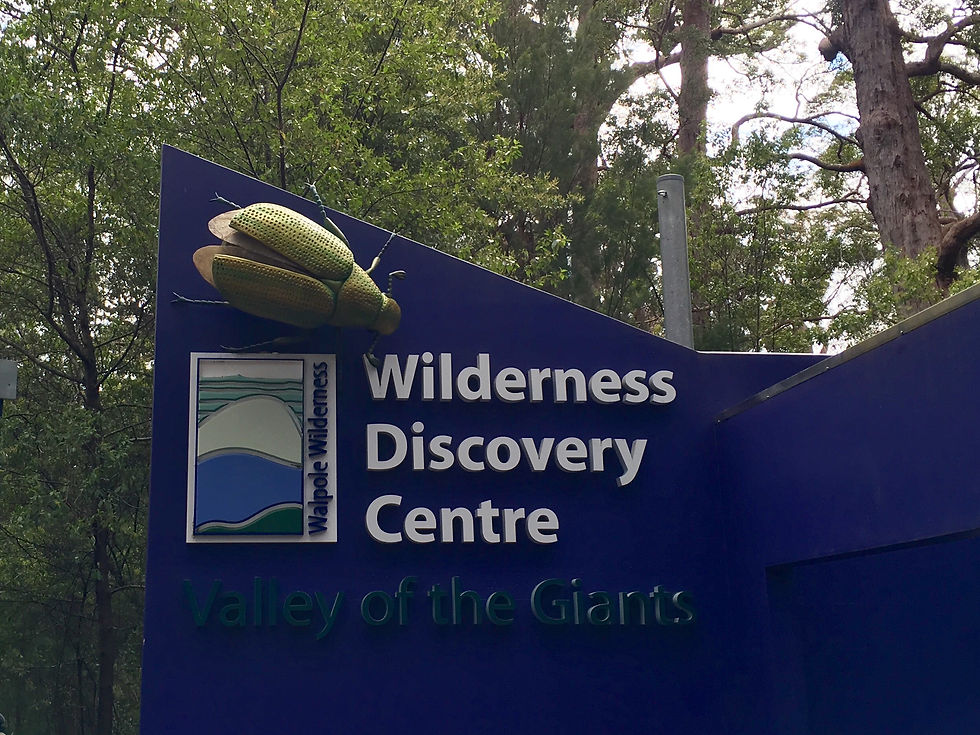Adelaide, Australia
- Rachel Cobb

- Aug 23, 2019
- 3 min read
Updated: Jun 21, 2022
My Life with Plants
This is part five of a series about a Sept 2016 trip to view the wildflowers and scenery of Australia.

From Stirling we headed to back to the coast to Torndirrup National Park with its famous gap walkway where huge surf rushes into a large crack between giant granite outcrops. There are also beautiful views of mountains, bays, crashing surf, natural bridges and blow holes. The granite hills were covered with melaleucas, banksias, Leucophyta brownii (Cushion Bush), lots of Adenanthos cuneatus, and soft mounds of Adenanthos sericeus, woolybush. Considering how easy it is to kill these plants in our California gardens seeing entire hillsides and coastal slopes covered with them made me question my garden abilities.

The last day of our road trip was spent passing through the eucalyptus forests of Southwestern Australia. The old growth forests here are home to the tallest trees in Australia. Aussies refer to them as tingle trees...after lots of googling, I’m still not sure of the origin of the name. Let’s just say that you tingle a bit when you see a tree this large. We stopped at the “Wilderness Discovery Center” to get a closer look at one of the remaining groves of old growth trees. Here the Valley of the Giants Tree Top Walk features a stunning walkway positioned 120 feet above the ground amid the spectacular heights of the tingle forest canopy. The structure of iron and cables sways and moves with the wind and other visitors and you are only at the middle of the trees, with the trunks both above and below you. Nearby, there is a less dramatic interpretive walk at ground level where you can get up close to many large 400-year-old red tingle trees and walk through the center of several that have been hollowed out by fire and disease. Among the trees were 3 interesting plants. One was a large white flowered clematis vine. A second was another vine that you occasionally see planted in California gardens, the purple pea-flowers Hardenbergia violacea. And finally, the waxy-leaved and bright clear yellow flowered Hibbertia cuneiformis.

Aussie native Clematis
The remainder of the day was spent driving back to Perth through this surprisingly wooded area of Australia. The trees were mostly eucalyptus and melaleucas and there was frequent evidence of previous wildfires. The rolling green hills and rural towns seemed less exotic than more remote areas we had visited. Back in Perth we ended our trip where we started our trip over a week earlier at King Park and Botanic Garden. We were interested to see if our perception of the park would have changed after spending a week in the bush looking at plants. We weren’t disappointed. While we now knew much more about many of the plants, there were still many more that we hadn’t seen in the wild and it was enjoyable to see people from all over the world that had come to visit Perth to check out the wildflowers.

We had learned a lot about Western Australia on this trip. Probably most amazing was what a small area of the continent we had covered. Even so, the diversity of plants and wildflowers was even more than we had expected. The vast size and number of National Parks and protected areas is amazing and there are very few people or tourists in early spring. Surprisingly, though often compared to Southern California, most areas have more rainfall than we receive. Also the beaches look much more tropical with their white quartz sand and aquamarine waters. As we had heard, the soils are very low in nutrients, but also very lacking in any organic matter. Most appear to be very well drained. I’ll try to remember some of these things when trying to grow western Australian plants here and understand and accept that some won’t ever be successful.
